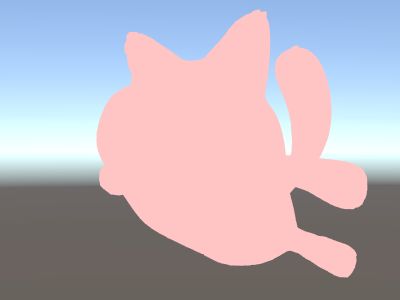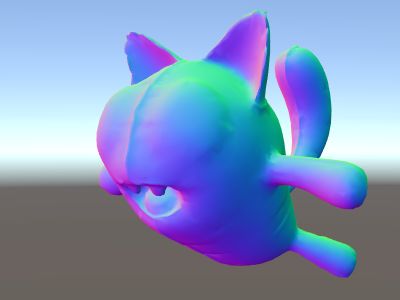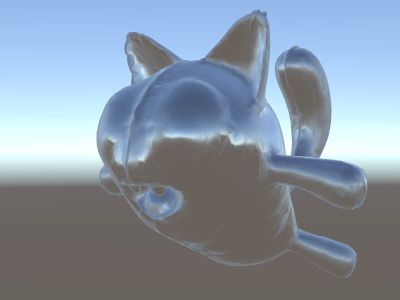Shader学习笔记(二):Vertex/Fragment Shader
这篇文章讨论如何写顶点、片元着色器(Vertex/Fragment Shader)。
概念解释
先看一个完整例子,关键地方我做了标记。先熟悉大致结构,后面我会详细解释:
Shader "Unlit/NewUnlitShader"
{
Properties
{
_MainTex ("Texture", 2D) = "white" {}
}
SubShader
{
Tags { "RenderType"="Opaque" }
LOD 100
Pass
{
// CG程序起始位置
CGPROGRAM
// 编译指令:表示有顶点着色器
#pragma vertex vert
// 编译指令:表示有片元着色器
#pragma fragment frag
#pragma multi_compile_fog
#include "UnityCG.cginc"
// 自定义的结构
struct appdata
{
float4 vertex : POSITION;
float2 uv : TEXCOORD0;
};
// 自定义的结构
struct v2f
{
float2 uv : TEXCOORD0;
UNITY_FOG_COORDS(1)
float4 vertex : SV_POSITION;
};
sampler2D _MainTex;
float4 _MainTex_ST;
// 顶点着色器函数
v2f vert (appdata v)
{
v2f o;
o.vertex = UnityObjectToClipPos(v.vertex);
o.uv = TRANSFORM_TEX(v.uv, _MainTex);
UNITY_TRANSFER_FOG(o,o.vertex);
return o;
}
// 片元着色器函数
fixed4 frag (v2f i) : SV_Target
{
fixed4 col = tex2D(_MainTex, i.uv);
UNITY_APPLY_FOG(i.fogCoord, col);
return col;
}
ENDCG
}
}
}关键概念的理解
- 可编程渲染管线:与固定渲染管线不同,可以让程序员自己控制渲染管线的一部分,分为Vertex Shader和Fragment Shader。
- Vertex Shader:作用于每个顶点,通常是处理从世界空间到裁剪空间(屏幕坐标)的坐标转换,后面紧接的是光栅化。
- Fragment Shader:作用于每个屏幕上的片元(这里可近似理解为像素),通常是计算颜色。
- ShaderLab:Unity专有的shader语言,Surface Shader全部由ShaderLab实现,Vertex/Fragment是由ShaderrLab内嵌CG/HLSL实现。
- Shading Language: 三种主流shader语言,均可以在ShaderLab中嵌套使用,官方推荐使用CG/HLSL(这两种语言由Microsoft和Nvidia达成一致,所以基本等价)。详见下面列表:
| 名字 | 全名 | 开发商 | 嵌套关键字 |
|---|---|---|---|
| CG | C for Graphic | Nvidia | CGPROGRAM |
| HLSL | High Level Shading Language | Microsoft | CGPROGRAM |
| GLSL | OpenGL Shading Language | OpenGL | GLSLPROGRAM |
DirectX在Windows和游戏领域称霸,OpenGL则在移动领域胜出。
关于两者孰优孰劣的讨论数不胜数。
这里总结了DirectX在Windows平台胜出的一些原因:
1. DirectX更早推出可编程渲染管线
2. OpenGL成员太多,新标准推进缓慢
3. DirectX不仅是图形库,还包括声音、网络等一套游戏开发解决方案
4. DirectX不向后兼容,OpenGL为兼容性保留了很多过时的设计
Vertex/Fragment语法
- SubShader:针对不同的硬件做不同的处理,运行时依次扫描,都失败则FallBack。
- Pass:一个SubShader中包含1到多个Pass,通常只需一个Pass。多个Pass可用于定义多渲染路径(Rendering Path),运行时选择执行哪个,常见于自定义光照模型中阴影处理。
- Shader Semantics:如
float4 vertex : POSITION,冒号后面是这个变量的语义,与GPU交互时用到。 - Vertex Shader的输入输出
- 输入:可以是以下三种:
- 由基本语义定义的变量:
POSITION,NORMAL,TEXCOORD0,TEXCOORD1, …,TANGENT,COLOR。 - 内置的结构:
appdata_base,appdata_tan,appdata_full。 - 自定义的结构。
- 由基本语义定义的变量:
- 输出:固定有
SV_POSITION,其他需要用到的varying变量。语义大部分情况下不重要,用TEXCOORD0就好。
- 输入:可以是以下三种:
- Fragment Shader的输入输出
- 输入:同Vertex Shader的输出。
- 输出:
SV_Target,通常是单个RGBA值。
实例解析
下面看几个Unity官方manual中的实例,加深理解:
- SimpleUnlitTextureShader:简单的纹理贴图,变换顶点坐标,按uv找贴图上的颜色。
Shader "Unlit/SimpleUnlitTexturedShader"
{
Properties
{
// we have removed support for texture tiling/offset,
// so make them not be displayed in material inspector
[NoScaleOffset] _MainTex ("Texture", 2D) = "white" {}
}
SubShader
{
Pass
{
CGPROGRAM
// use "vert" function as the vertex shader
#pragma vertex vert
// use "frag" function as the pixel (fragment) shader
#pragma fragment frag
// vertex shader inputs
struct appdata
{
float4 vertex : POSITION; // vertex position
float2 uv : TEXCOORD0; // texture coordinate
};
// vertex shader outputs ("vertex to fragment")
struct v2f
{
float2 uv : TEXCOORD0; // texture coordinate
float4 vertex : SV_POSITION; // clip space position
};
// vertex shader
v2f vert (appdata v)
{
v2f o;
// transform position to clip space
// (multiply with model*view*projection matrix)
o.vertex = mul(UNITY_MATRIX_MVP, v.vertex);
// just pass the texture coordinate
o.uv = v.uv;
return o;
}
// texture we will sample
sampler2D _MainTex;
// pixel shader; returns low precision ("fixed4" type)
// color ("SV_Target" semantic)
fixed4 frag (v2f i) : SV_Target
{
// sample texture and return it
fixed4 col = tex2D(_MainTex, i.uv);
return col;
}
ENDCG
}
}
}- SingleColor:给模型赋予单色。vertex只传出SV_POSITION,fragment不传参。CG中直接引用了ShaderLab的Properties参数_Color(ShaderLab和CG的类型存在对应关系)。
Shader "Unlit/SingleColor"
{
Properties
{
// Color property for material inspector, default to white
_Color ("Main Color", Color) = (1,1,1,1)
}
SubShader
{
Pass
{
CGPROGRAM
#pragma vertex vert
#pragma fragment frag
// vertex shader
// this time instead of using "appdata" struct, just spell inputs manually,
// and instead of returning v2f struct, also just return a single output
// float4 clip position
float4 vert (float4 vertex : POSITION) : SV_POSITION
{
return mul(UNITY_MATRIX_MVP, vertex);
}
// color from the material
fixed4 _Color;
// pixel shader, no inputs needed
fixed4 frag () : SV_Target
{
return _Color; // just return it
}
ENDCG
}
}
}- WorldSpaceNormal:根据法向量来变色。worldNormal作为varying变量传给fragment。
Shader "Unlit/WorldSpaceNormals"
{
// no Properties block this time!
SubShader
{
Pass
{
CGPROGRAM
#pragma vertex vert
#pragma fragment frag
// include file that contains UnityObjectToWorldNormal helper function
#include "UnityCG.cginc"
struct v2f {
// we'll output world space normal as one of regular ("texcoord") interpolators
half3 worldNormal : TEXCOORD0;
float4 pos : SV_POSITION;
};
// vertex shader: takes object space normal as input too
v2f vert (float4 vertex : POSITION, float3 normal : NORMAL)
{
v2f o;
o.pos = UnityObjectToClipPos(vertex);
// UnityCG.cginc file contains function to transform
// normal from object to world space, use that
o.worldNormal = UnityObjectToWorldNormal(normal);
return o;
}
fixed4 frag (v2f i) : SV_Target
{
fixed4 c = 0;
// normal is a 3D vector with xyz components; in -1..1
// range. To display it as color, bring the range into 0..1
// and put into red, green, blue components
c.rgb = i.worldNormal*0.5+0.5;
return c;
}
ENDCG
}
}
}- SkyReflection:反射环境。对比由Surface Shader的实现,可发现简洁很多。float4表示点,float3表示向量。
Shader "Unlit/SkyReflection"
{
SubShader
{
Pass
{
CGPROGRAM
#pragma vertex vert
#pragma fragment frag
#include "UnityCG.cginc"
struct v2f {
half3 worldRefl : TEXCOORD0;
float4 pos : SV_POSITION;
};
v2f vert (float4 vertex : POSITION, float3 normal : NORMAL)
{
v2f o;
o.pos = UnityObjectToClipPos(vertex);
// compute world space position of the vertex
float3 worldPos = mul(_Object2World, vertex).xyz;
// compute world space view direction
float3 worldViewDir = normalize(UnityWorldSpaceViewDir(worldPos));
// world space normal
float3 worldNormal = UnityObjectToWorldNormal(normal);
// world space reflection vector
o.worldRefl = reflect(-worldViewDir, worldNormal);
return o;
}
fixed4 frag (v2f i) : SV_Target
{
// sample the default reflection cubemap, using the reflection vector
half4 skyData = UNITY_SAMPLE_TEXCUBE(unity_SpecCube0, i.worldRefl);
// decode cubemap data into actual color
half3 skyColor = DecodeHDR (skyData, unity_SpecCube0_HDR);
// output it!
fixed4 c = 0;
c.rgb = skyColor;
return c;
}
ENDCG
}
}
}再谈与Surface Shader的关系
上一篇说到Surface Shader是简化版的shader编写工具,通过封装减少了程序员的重复工作量。
那么Surface Shader是如何编译成Vertex/Fragment Shader的呢?它们三者的先后关系又是怎样?
我的理解是:Surface Shader的surf函数位于fragment shader的起始阶段,编译后生成的是Fragment Shader。这点可用Unity自带的shader inspector工具查看。具体可参见知乎上的讨论,说得很详细了,这里不再展开。



